In Oklahoma’s vast and varied landscapes, you can encounter a remarkable diversity of hawks, each with distinctive features and ecological significance.
Elevating the skies with their majestic presence, these 11 hawk species navigate diverse habitats, from dense woodlands to open prairies.
Join us on an avian journey as we unveil the unique characteristics and roles these birds of prey play in the delicate balance of Oklahoma’s ecosystems.
From the iconic Red-Tailed Hawk to the elusive Ferruginous Hawk, these aerial predators showcase nature’s beauty and contribute significantly to the state’s intricate web of life.
Get ready to soar through the captivating world of 11 Hawks in Oklahoma and gain insights into the fascinating lives of these magnificent raptors. Stay focused.
11 Hawks in Oklahoma
Hawks in Oklahoma wield profound ecological impact by regulating prey populations. Apex predators maintain balance within ecosystems by controlling rodents and small mammal populations.
This regulatory role extends to preserving vegetation and biodiversity, shaping the overall health and resilience of Oklahoma’s diverse landscapes.
The presence of these raptors is integral to sustaining ecological equilibrium in the region. Discover the diverse and fascinating hawks gracing the skies of Oklahoma.
Each species brings unique characteristics and ecological significance, from the iconic Red-Tailed Hawk to the elusive Ferruginous Hawk.
Join us on a journey to explore the lifestyles and roles these majestic raptors play in the state’s rich and varied landscapes.
1. Red-Tailed Hawk
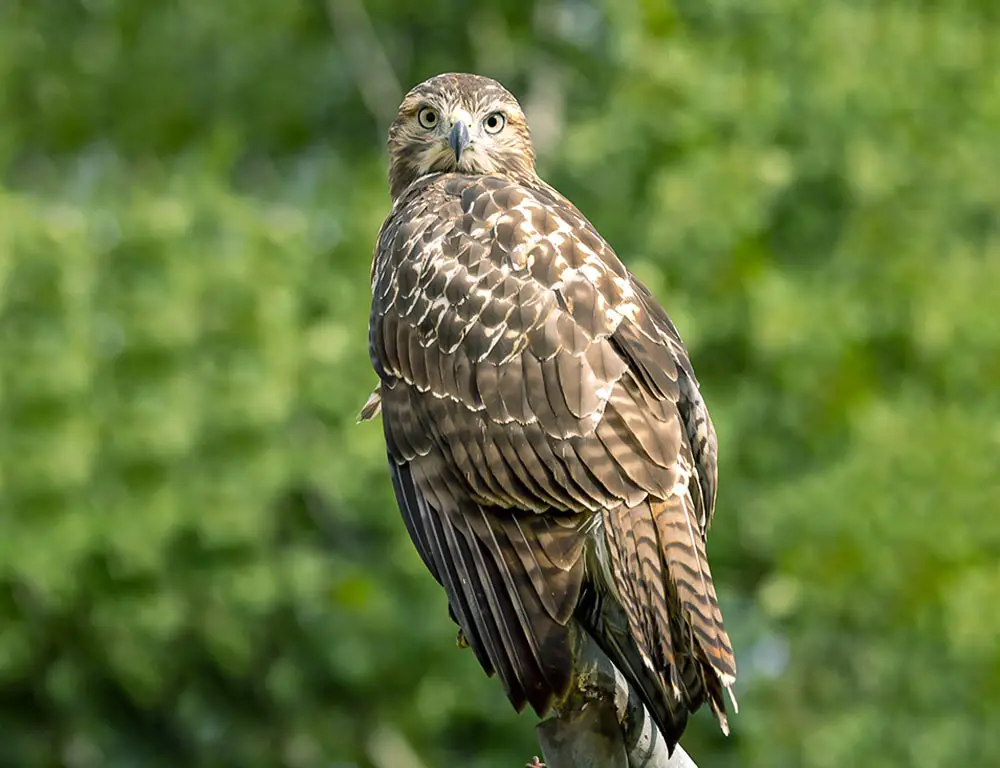
- Scientific Name: Buteo jamaicensis
- Population: Common and widespread
- Life Span: Up to 21 years in the wild
- Size: 18-26 inches
- Weight: 2-4 pounds
- Wingspan: 3.3-4.8 feet
- Status: Least Concern
The Red-Tailed Hawk is a widespread species in Oklahoma. Recognized by its distinctive red tail, it adapts well to diverse environments.
With a life span of up to 21 years, these hawks are large, weighing between 2-4 pounds, and boast a wingspan of 3.3-4.8 feet. Typically perched on high vantage points, they use their keen eyesight to spot prey.
Red-tailed hawks are versatile hunters, preying on small mammals, birds, and occasionally reptiles.
They soar gracefully on thermal updrafts, utilizing their broad wings for efficient flight. Despite urbanization, their adaptable nature allows them to thrive in various landscapes.
2. Cooper’s Hawk

- Scientific Name: Accipiter cooperii
- Population: Stable
- Life Span: Up to 12 years
- Size: 14-20 inches
- Weight: 7-24 ounces
- Wingspan: 24-35 inches
- Status: Least Concern
Cooper’s Hawks, with their short wings and long tails, are adept at navigating wooded areas. They exhibit a stable population with a lifespan of up to 12 years.
Their size ranges from 14-20 inches, and they weigh between 7-24 ounces, boasting a wingspan of 24-35 inches. Preferring dense forests, these hawks are agile flyers, darting through trees to catch small birds and mammals.
Urban and suburban environments are also within their habitat range, reflecting their adaptability. Observing from concealed perches, they execute surprise attacks on unsuspecting prey.
3. Sharp-Shinned Hawk
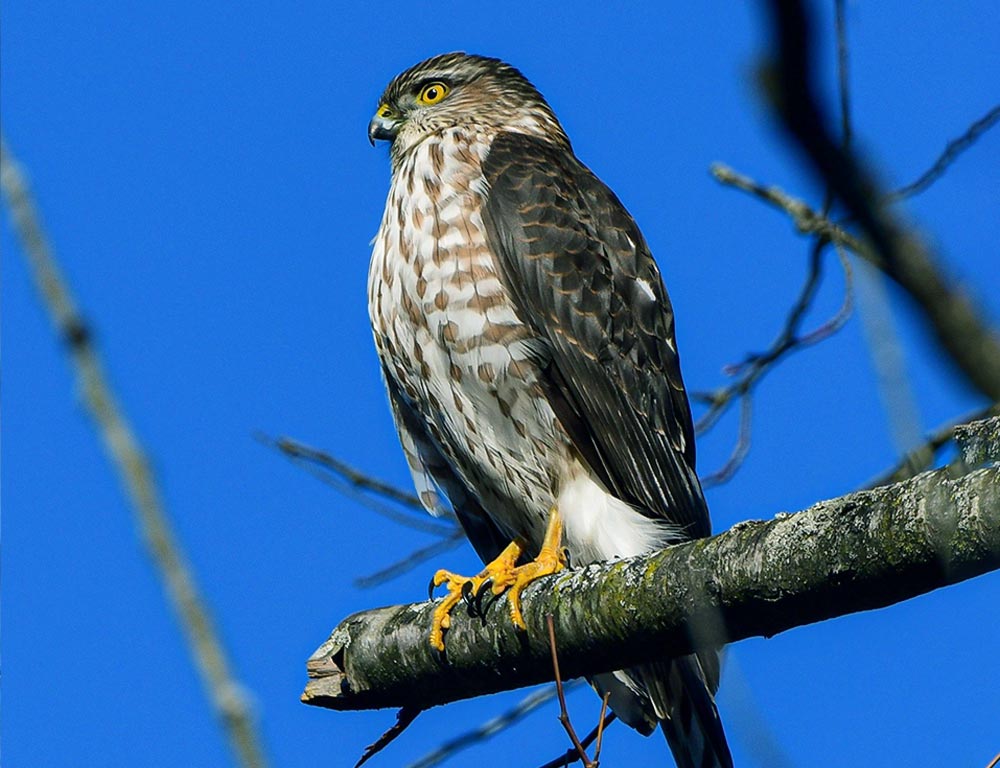
- Scientific Name: Accipiter striatus
- Population: Stable
- Life Span: Up to 10 years
- Size: 9-13 inches
- Weight: 3-7 ounces
- Wingspan: 16-22 inches
- Status: Least Concern
The Sharp-Shinned Hawk, known for its short wings and long tail, has a stable population in Oklahoma.
With a lifespan of up to 10 years, they are relatively small, ranging from 9-13 inches, weighing 3-7 ounces, and featuring a wingspan of 16-22 inches. These hawks prefer forested habitats but can adapt to suburban areas.
Agile fliers, maneuver through dense vegetation to catch small birds. Their swift, surprise attacks showcase their predatory prowess.
The Sharp-Shinned Hawk plays a vital role in maintaining balanced ecosystems by controlling populations of smaller birds and rodents.
4. Common Black Hawk
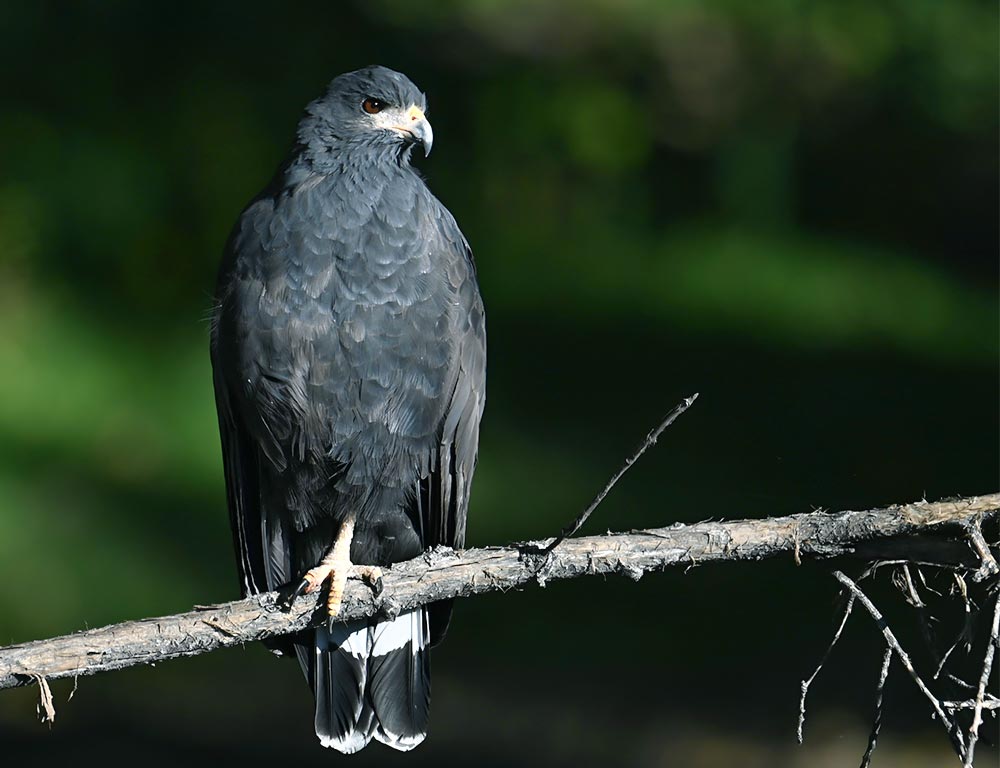
- Scientific Name: Buteogallus anthracinus
- Population: Limited distribution
- Life Span: Information not well-documented
- Size: Medium-sized
- Weight: Information not well-documented
- Wingspan: Information not well-documented
- Status: Least Concern
The Common Black Hawk has a limited distribution in Oklahoma. Details about its life span, size, weight, and wingspan are not well-documented.
Typically found near water bodies, such as rivers and lakes, these hawks feed on fish, amphibians, and small mammals. Their adaptability to riparian habitats highlights their unique ecological niche.
The information scarcity emphasizes the need for further research on this enigmatic hawk species in the Oklahoma region.
5. Broad-Winged Hawk
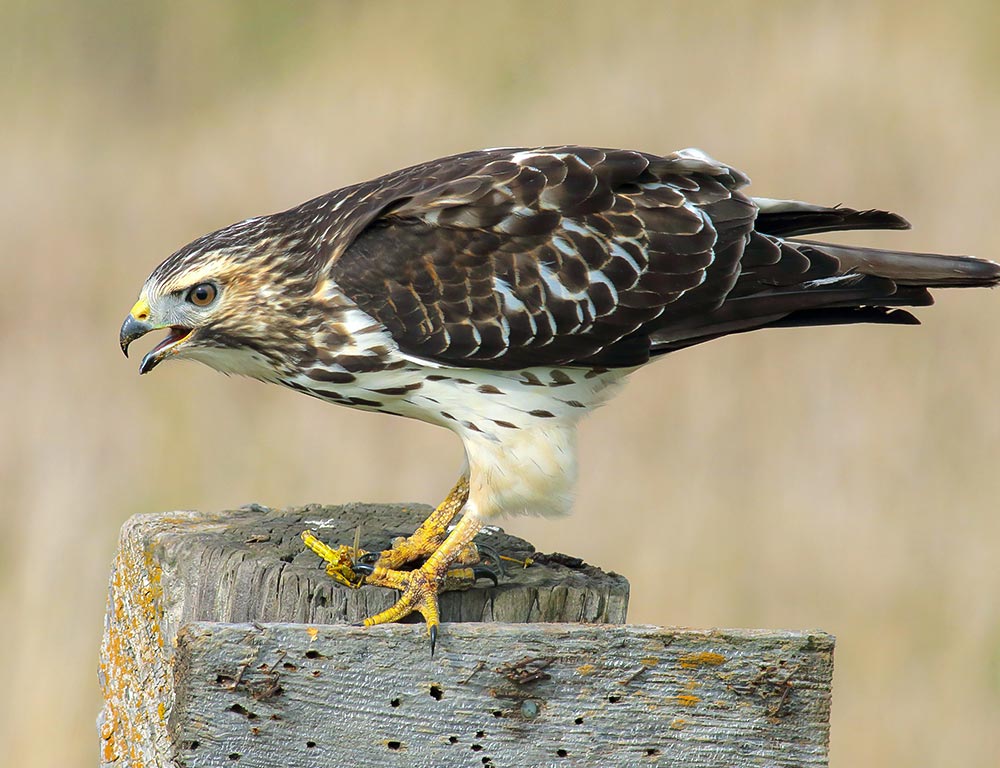
- Scientific Name: Buteo platypterus
- Population: Abundant
- Life Span: Up to 4 years
- Size: 13-17 inches
- Weight: 9-20 ounces
- Wingspan: 28-37 inches
- Status: Least Concern
The Broad-Winged Hawk is abundant in Oklahoma and is recognized for its distinctively banded tail and soaring flight.
With a lifespan of up to 4 years, they measure between 13-17 inches, weigh 9-20 ounces, and boast a wingspan of 28-37 inches.
These hawks prefer deciduous forests and are known for their impressive migratory behavior, covering thousands of miles to and from their breeding grounds in Central and South America.
Their hunting style involves perching patiently and then swiftly descending on small mammals and amphibians. Their resonant whistling calls are characteristic sounds in the woodlands during migration season.
6. Rough-Legged Hawk
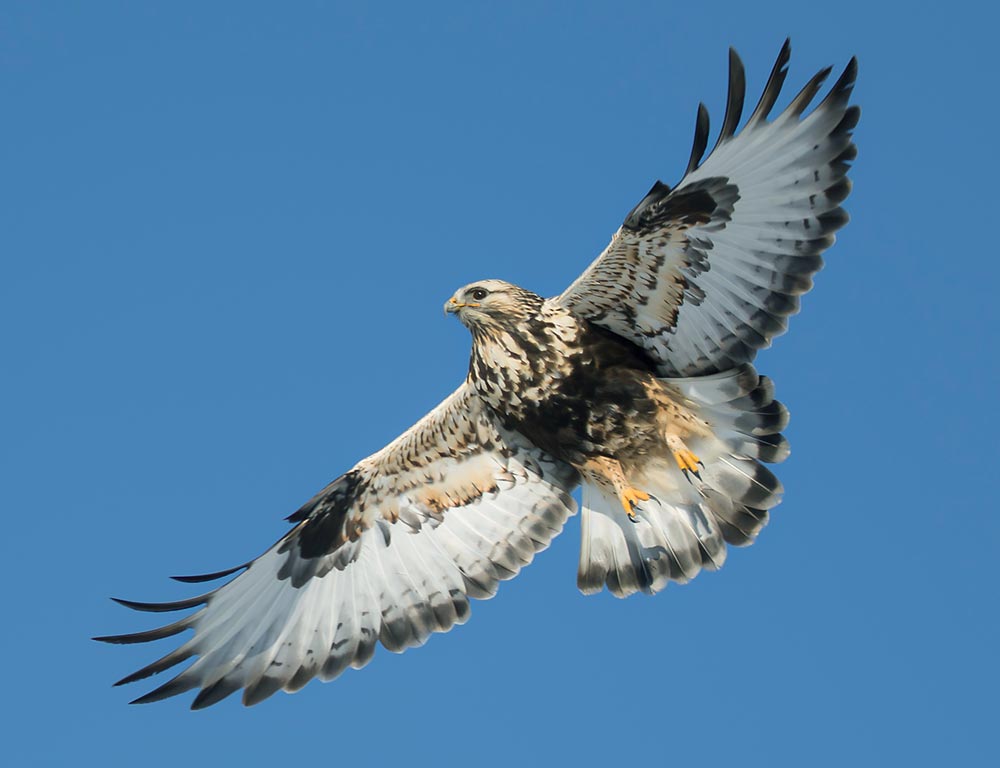
- Scientific Name: Buteo lagopus
- Population: Stable
- Life Span: Up to 10 years
- Size: 18-24 inches
- Weight: 1.5-3.5 pounds
- Wingspan: 52-54 inches
- Status: Least Concern
The Rough-Legged Hawk, with feathered legs and a distinct white V on its tail, has a stable population in Oklahoma.
With a lifespan of up to 10 years, they are sizable, measuring between 18-24 inches, weighing 1.5-3.5 pounds, and featuring an impressive wingspan of 52-54 inches.
This hawk thrives in open landscapes, such as grasslands and marshes, and is known for hovering while hunting. Their diet primarily consists of small mammals, and they are well-adapted to cold climates.
Remarkably, Rough-Legged Hawks breed in the Arctic tundra and migrate to warmer regions during winter.
7. Swainson’s Hawk
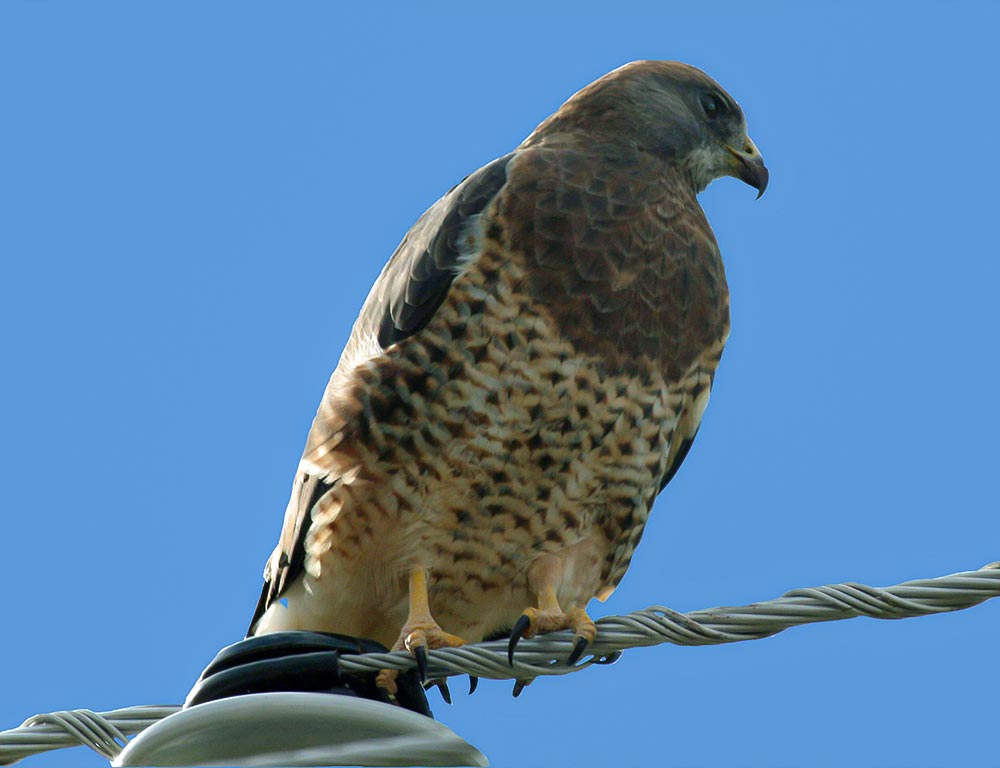
- Scientific Name: Buteo Swainsoni
- Population: Stable
- Life Span: Up to 16 years
- Size: 18-22 inches
- Weight: 2-3.5 pounds
- Wingspan: 48-60 inches
- Status: Least Concern
Swainson’s Hawks, recognized for their distinctive plumage and frequent soaring behavior, maintain a stable population in Oklahoma.
With a lifespan of up to 16 years, they measure between 18 and 22 inches, weigh 2 to 3.5 pounds, and have an impressive wingspan of 48 to 60 inches. These hawks prefer open habitats, including grasslands and agricultural areas.
Known for their long-distance migration to South America, Swainson’s Hawks feed primarily on insects and small mammals.
They exhibit communal roosting behaviors during migration, emphasizing their sociable nature.
8. Osprey
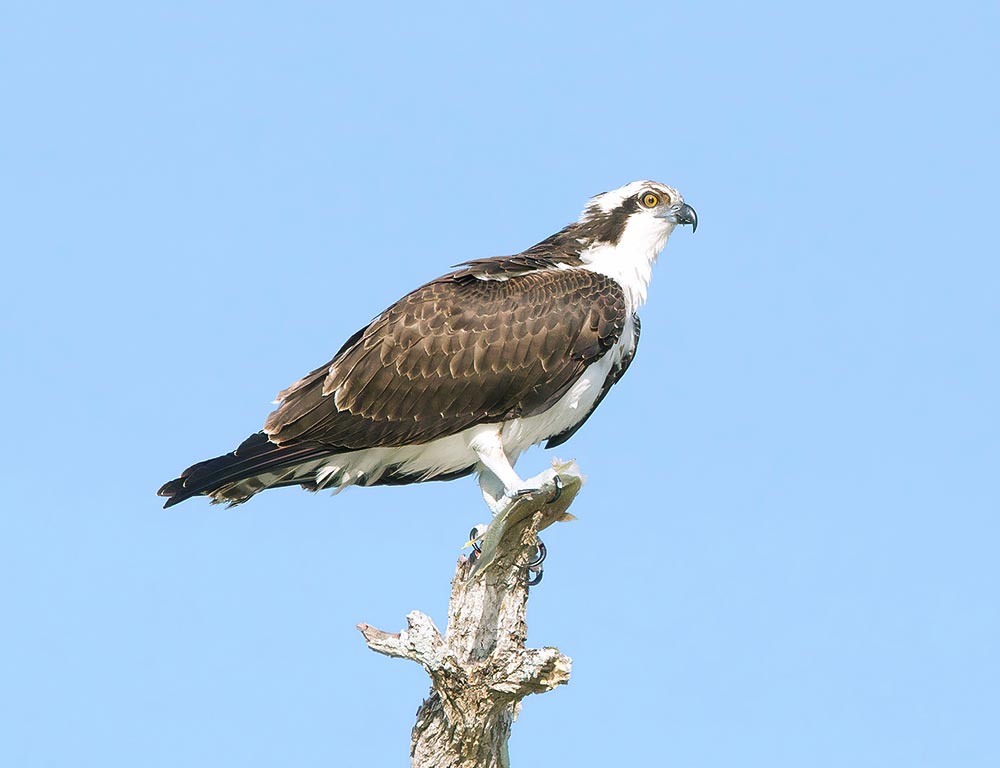
- Scientific Name: Pandion haliaetus
- Population: Increasing
- Life Span: Up to 25 years
- Size: 21-24 inches
- Weight: 2.5-4.5 pounds
- Wingspan: 59-71 inches
- Status: Least Concern
The Osprey, also known as the fish hawk, is experiencing an increasing population in Oklahoma.
With a lifespan of up to 25 years, they measure between 21-24 inches, weigh 2.5-4.5 pounds, and have a wingspan of 59-71 inches.
Recognizable by their white head and dark eye patches, Ospreys are expert fishers. They inhabit coastal areas, lakeshores, and rivers, using their powerful talons to catch fish.
Adapted for a piscivorous diet, their reversible outer toes and barbed pads aid in gripping slippery prey. Ospreys demonstrate impressive diving skills, plunging feet-first into the water to secure their meals.
9. Red-Shouldered Hawk
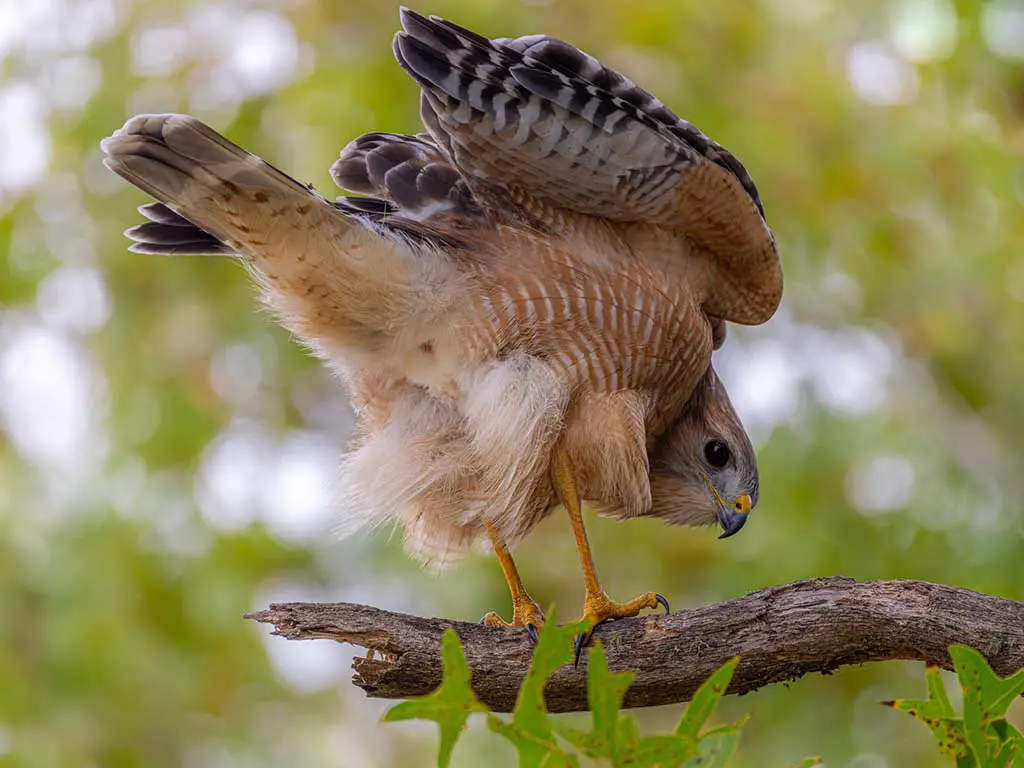
- Scientific Name: Buteo lineatus
- Population: Stable
- Life Span: Up to 15 years
- Size: 16-24 inches
- Weight: 1-2.5 pounds
- Wingspan: 37-43 inches
- Status: Least Concern
The Red-Shouldered Hawk, with distinctive reddish shoulders and bold vocalizations, maintains a stable population in Oklahoma.
With a lifespan of up to 15 years, they measure between 16 and 24 inches, weigh 1 to 2.5 pounds, and feature a wingspan of 37 to 43 inches.
These hawks prefer wooded habitats, often near water, and are skilled at maneuvering through dense vegetation. Their diet includes small mammals, amphibians, and reptiles.
During courtship displays, they engage in aerial acrobatics and call loudly. Red-shouldered hawks play a vital role in controlling rodent populations, contributing to the ecological balance of their habitats.
10. Ferruginous Hawk
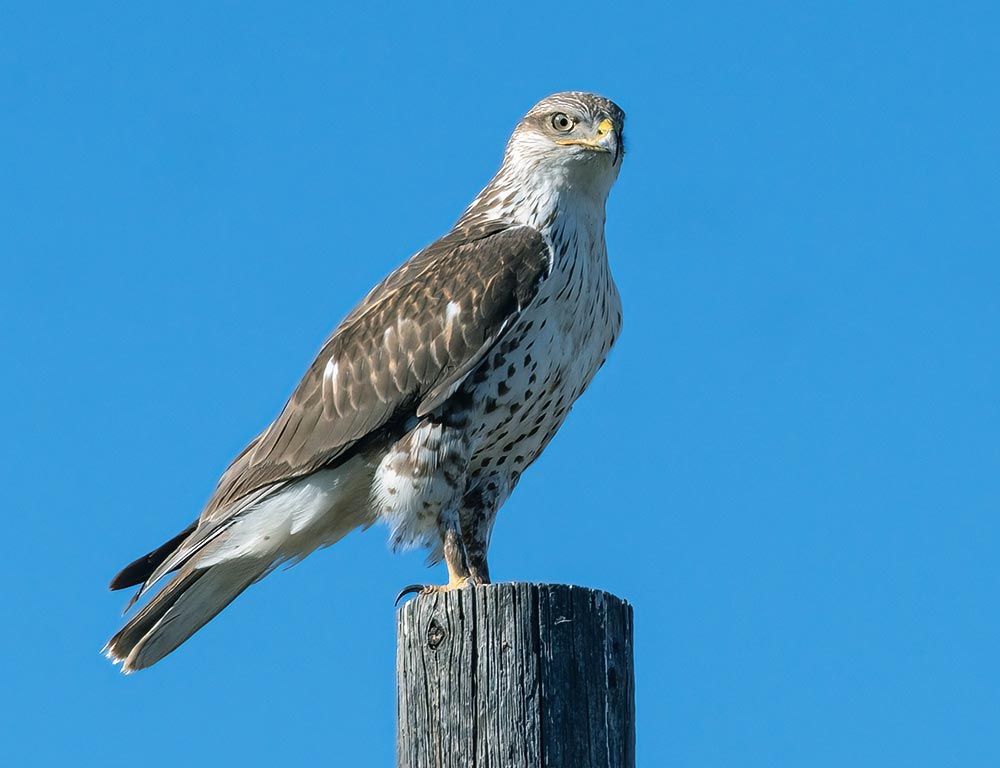
- Scientific Name: Buteo regalis
- Population: Declining
- Life Span: Up to 20 years
- Size: 22-27 inches
- Weight: 2.5-5.5 pounds
- Wingspan: 52-56 inches
- Status: Near Threatened
The Ferruginous Hawk, with its distinctive rusty-colored plumage and large size, faces a declining population in Oklahoma, earning a Near Threatened status.
With a lifespan of up to 20 years, they measure between 22-27 inches, weigh 2.5-5.5 pounds, and boast a wingspan of 52-56 inches. Preferring open grasslands and prairies, they primarily feed on small mammals.
Threats to their population include habitat loss and pesticide exposure. Conservation efforts are crucial to preserving the Ferruginous Hawk and its unique role in the ecosystem.
11. Northern Harrier

- Scientific Name: Circus hudsonius
- Population: Stable
- Life Span: Up to 16 years
- Size: 18-24 inches
- Weight: 10-26 ounces
- Wingspan: 40-48 inches
- Status: Least Concern
The Northern Harrier, renowned for its distinctive facial disk and low-flying hunting style, maintains a stable population in Oklahoma.
With a lifespan of up to 16 years, they measure between 18 and 24 inches, weigh 10 to 26 ounces, and have a wingspan of 40 to 48 inches. These hawks prefer open habitats such as marshes, grasslands, and fields.
Their diet consists mainly of small mammals and birds. Northern Harriers exhibit a unique behavior known as “sky-dancing” during courtship, involving acrobatic flights and vocalizations.
Their ability to hover over fields while hunting makes them effective predators in their ecosystems.
Wrapping Up
In the vast skies of Oklahoma, hawks emerge as captivating symbols of nature’s grace and adaptability.
Each species weaves a unique tale of survival and contribution to the state’s ecological tapestry from the soaring Red-Tailed Hawk to the elusive Ferruginous Hawk.
These majestic raptors showcase the delicate balance of predator and prey relationships, underscoring the interconnectedness of Oklahoma’s diverse ecosystems.
As stewards of the environment, understanding and appreciating the lifestyles of these hawks become imperative for conservation efforts.
Whether navigating dense woodlands or gliding over open prairies, these birds of prey inspire awe and respect.
Through this exploration, we’ve uncovered the ornithological intricacies and the vital roles these hawks play in maintaining the health and equilibrium of Oklahoma’s natural world. Best of luck.